Trailing petunia is a popular and low-maintenance ornamental plant used to decorate gardens and balconies. It features cascading stems densely covered with small yet vibrant flowers. Thanks to its shape and abundant blooming, petunias look stunning both in flower beds and hanging baskets.
There is a vast variety of petunia cultivars. They differ in flower size and color, stem length, and foliage density. Below, we explore the most popular trailing petunia varieties and their unique features.
Table of contents
What Is a Trailing Petunia?
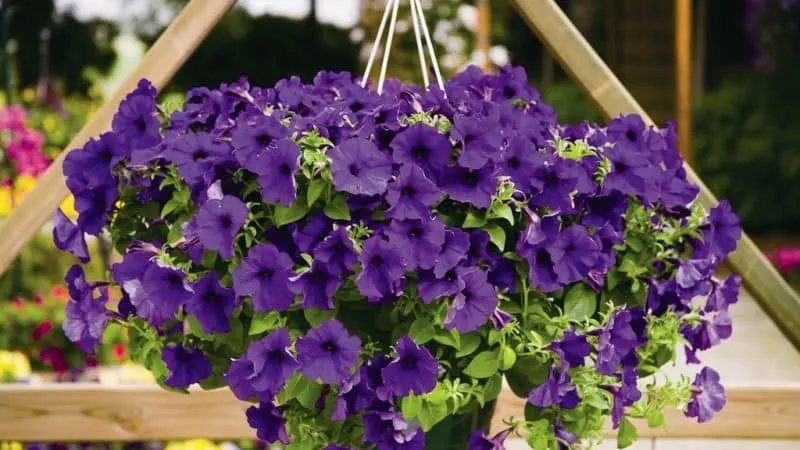
Trailing petunia is a decorative plant used to enhance flower beds and balconies. To understand how it differs from other petunia types, let’s examine its key characteristics:
- Bush and stems. The bushes are sprawling, with numerous stems. Stem length varies between 30–120 cm. The stems are thin and cascade downward in one direction.
- Flowers. They are bell-shaped and relatively small. You can find them in various shades, with the outer petals always lighter than the inner ones. Some varieties feature patterned edges or contrasting borders. Each stem produces multiple flowers.
- Leaves. Leaf size depends on the plant’s age—older plants have larger leaves. The foliage is oval-rounded, slightly pointed at both ends, and covered with fine hairs, giving them a soft texture.
Trailing and cascading petunias are similar. The latter, however, have thicker and longer stems that initially grow upward before spreading outward and downward. Their flowers are larger but less abundant. Trailing petunias grow downward from the start, while cascading ones first grow upward, then sideways, and finally downward.
Fun fact! Botanists have determined that cascading petunias are a subtype of trailing petunias.
Popular Trailing Petunia Varieties
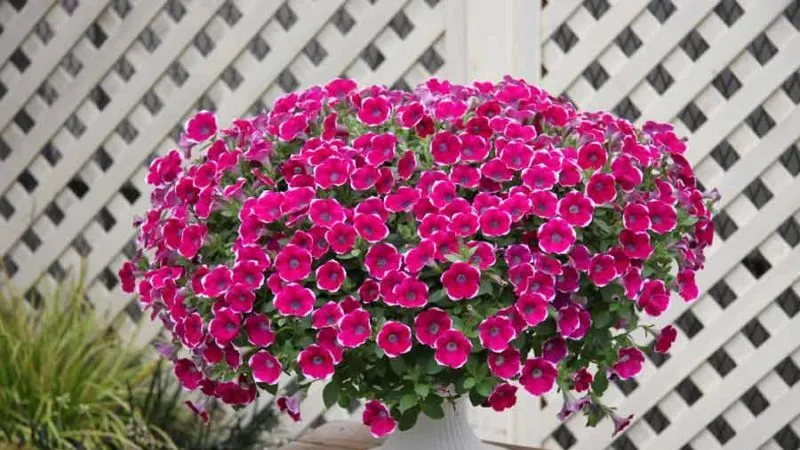
There are numerous petunia varieties available. They differ in flower size, color, stem length, and resilience to environmental factors.
All varieties are divided into large-flowered and small-flowered (multiflora) types. The former have blooms with a diameter of 8 cm or more, while the latter feature flowers measuring 5–7 cm. Small-flowered petunias typically bloom more profusely than large-flowered ones, though both types can be densely covered in flowers.
Large-flowered petunias are generally harder to grow and maintain. Their oversized blooms tend to fall off during heavy rain, so many gardeners prefer to grow them in hanging baskets.
Fun fact! Miniature-flowered petunias have recently appeared on the market, with blooms measuring just 2.5–4 cm.
Velvet F1
Velvet is a hybrid petunia variety belonging to the small-flowered type.
Stem length ranges from 80–100 cm.
Advantages of the Velvet series include: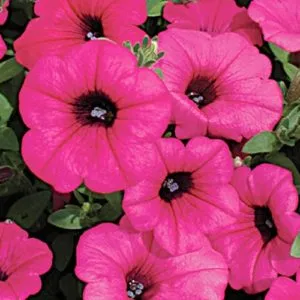
- affordable seeds;
- resistance to common diseases;
- pest resilience;
- fast growth;
- high germination rate;
- the ability to propagate from seeds.
This series includes several cultivars:
- Purple Velvet. Stems grow up to 100 cm long. Flowers measure 5–6 cm in diameter and have a deep purple hue with a nearly black center.
- Salmon Shades Velvet. Stems reach 80 cm. Flowers are 7–8 cm wide, with a soft peachy-pink (salmon) color.
- Rose Vein Velvet. Stems grow up to 100 cm. The petals are light pink with dark pink veining and vertical stripes. Flower diameter: 5–5.5 cm.
- Rosy Velvet. Stems reach 80 cm. Bright pink flowers feature a pale yellow (beige) center. Diameter: 6–7 cm.
Avalanche

The Avalanche hybrid series is a favorite among gardeners. Its name comes from the sheer abundance of flowers, which create a cascading "avalanche" of color.
Stem length varies from 80–120 cm. Flowers measure 7–9 cm in diameter, classifying them as large-flowered.
This group is prized for:
- seed propagation capability;
- profuse blooming;
- hardiness in various weather conditions;
- diverse color options.
The Avalanche series includes several color variants:
- Red. Deep red petals with a dark purple center and thin black lines along each petal.
- White. Pure white flowers with a yellow-green center.
- Salmon. Soft salmon-colored blooms with a white center.
- Pink. Vibrant pink flowers with a white center.
- Purple Star. Rich red petals with a star-like pattern and a yellow center.
- Purple. Dark pink flowers with a deep purple center.
- Yellow Star. White petals with bright yellow veins radiating from the center, resembling a star.
- Blue Star. Purple flowers with a white five-pointed star pattern.
- Yellow Caprice. Cool lemon-yellow in mild weather, developing a soft pink tint in hot, sunny conditions.
Opera
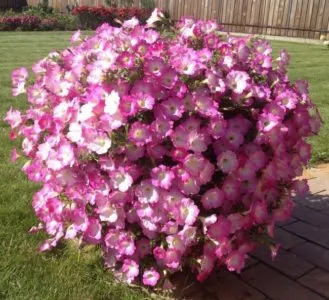 Opera petunias are first-generation hybrids. They belong to the small-flowered category, with stems reaching 80–120 cm and flowers measuring 5–7 cm in diameter.
Opera petunias are first-generation hybrids. They belong to the small-flowered category, with stems reaching 80–120 cm and flowers measuring 5–7 cm in diameter.
The main advantage of this group is its tolerance to low light—it thrives even in partial shade.
The Opera series includes:
- Raspberry Ice. Soft pink flowers with a raspberry center and delicate veining. Diameter: 6 cm. Stem length: 1 m.
- White. Pure white flowers with a greenish center. Stems grow up to 80 cm.
- Coral. Coral-colored blooms with a pale yellow center. Stem length: 1.2 m.
- Red. Vibrant red flowers, the largest in the series (8 cm in diameter).
- Blue. Bright violet-blue flowers.
- Purple. Muted pink petals with a black center.
- Raspberry Veins. White petals covered in bright pink veining.
- Blue. Double-petaled blue flowers.
- Lilac. Pinkish petals with purple veins.
- Pink. Pastel pink petals surrounding a white center.
Success

Success petunias are large-flowered, with short stems measuring 30–70 cm.
Notable cultivars in the Success series:
- Deep Pink. Stems grow 30–45 cm long. Flowers are large (10–12 cm) and raspberry-colored.
- Burgundy. Dark crimson flowers (10–12 cm). Stem length: 35 cm.
- Silver Vein. Stems reach 30 cm. Flowers are light pink with lilac veins (6.5–8 cm in diameter).
Growing Tips
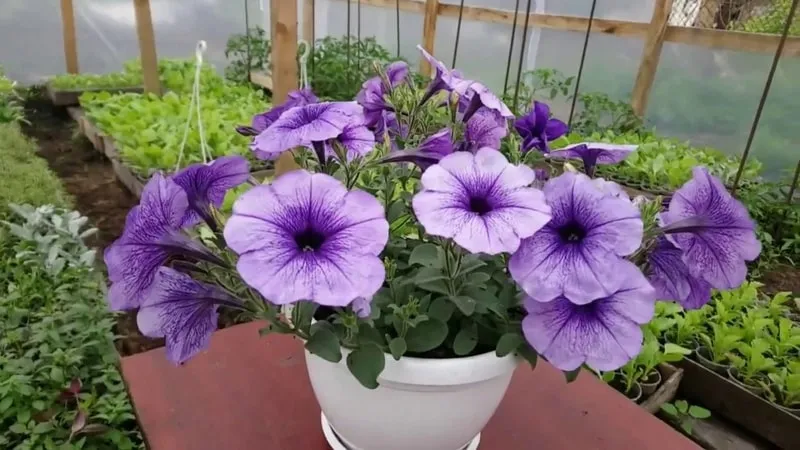
Growing trailing petunias is relatively easy. These hardy plants require minimal care.
Many beginners assume all petunias have the same cultivation requirements.
However, trailing petunias have some unique needs:
- Spacing. Plants should be spaced at least 30 cm apart, whereas bush varieties can be planted 20 cm apart.
- Light. Trailing petunias are particularly light-demanding. Insufficient sunlight results in sparse blooming.
- Pruning. Trailing varieties require more frequent pruning than bush types. Both the main stem and side shoots should be trimmed (not just pinched) for optimal growth.
- Deadheading. Unlike cascading petunias, trailing types need regular removal of spent flowers and seed pods to encourage continuous blooming.
Planting Trailing Petunias and Growing Seedlings
Trailing petunias can be propagated vegetatively (via cuttings) or generatively (from seeds).
Vegetative propagation is ideal for preserving specific cultivars, while seed propagation works well for experimenting with new varieties.
Note: Self-collected seeds may not retain parent plant traits, especially if sourced from hybrids. For true-to-type plants, purchase seeds from reputable suppliers.
Regardless of the propagation method, planting follows the same steps. Dig 10x10 cm holes, place the plants without burying the root collar, and space them 30 cm apart. Water thoroughly after planting.
Seed Method
Seeds can be purchased or collected from existing plants. Store-bought seeds are usually pre-treated.
Home-collected seeds require preparation:
- Disinfection. Soak seeds in a light pink potassium permanganate solution for 30–60 minutes, then rinse.
- Growth stimulation. Soak seeds in a growth stimulant (e.g., Epin) for 24 hours.
Pelleted seeds are easier to handle due to their larger size, while loose seeds are cheaper but more challenging to sow.
Before sowing, prepare containers, drainage (e.g., perlite or clay pebbles), and soil. Use store-bought potting mix or make your own from:
- 2 parts garden soil;
- 2 parts peat;
- 2 parts compost;
- 1 part sand.
Sterilize the soil, drainage, and containers using a dark pink potassium permanganate solution or boiling water.
Fill the container with 1 cm of drainage, then add soil, leaving 2–3 cm at the top.
For pelleted seeds, space them 1–2 cm apart and press lightly into the soil. For loose seeds, mix with sand before scattering or distribute over a layer of snow for better visibility.
Mist the soil with warm water, cover with plastic, and place in a warm spot. Keep the soil moist.
After germination, gradually increase ventilation. Remove the cover once the seedlings develop two true leaves.
Water seedlings daily in the morning or evening. Transplant into individual pots after the second set of true leaves appears.
Tip: Sow seeds in late February or early March.
Cutting Method
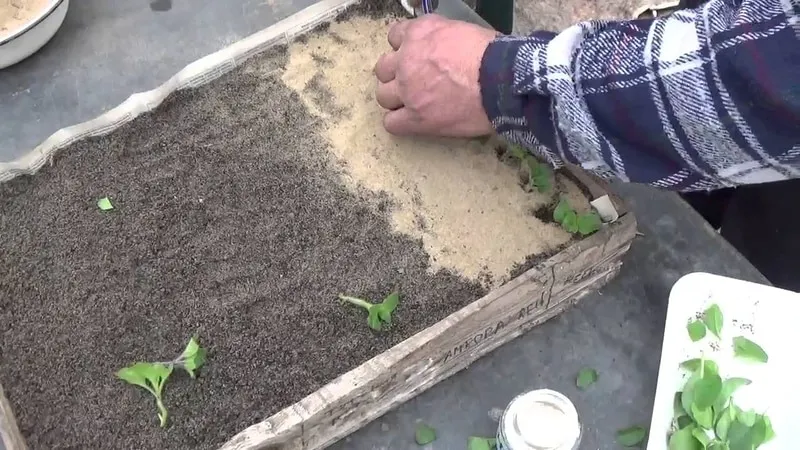
Select a healthy plant and take cuttings with at least two nodes, cutting at an angle.
Disinfect the cut end in a light pink potassium permanganate solution, then dip in a rooting hormone.
Use the same soil mix as for seedlings, or combine garden soil with water-retaining crystals.
Plant cuttings in a shared container, burying them deep enough to stand upright. Cover with plastic.
Rooting takes 1–2 weeks. Transplant into individual transparent cups once roots develop. Repot when roots outgrow the container.
Water daily and remove the cover after rooting.
Care Tips for Abundant Blooming
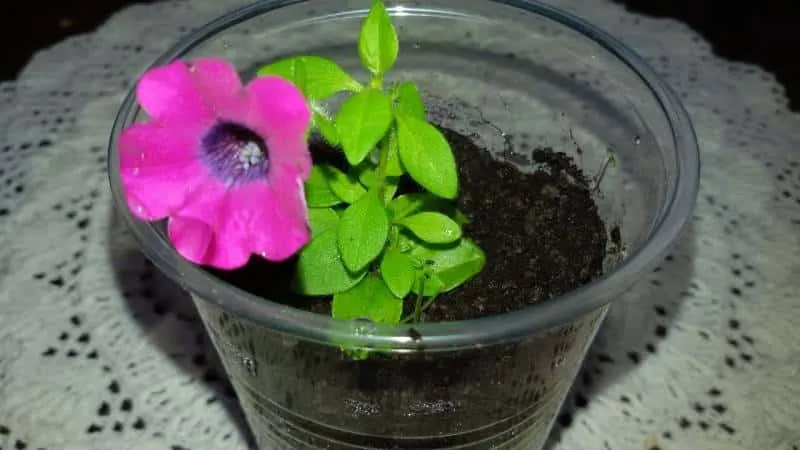
Proper care ensures prolific flowering. Maintaining petunias is simple and time-efficient.
Key care practices:
- Watering. Water daily at the base using warm water. Avoid wetting the foliage. Morning or evening is best. Increase water volume as plants mature.
- Fertilizing. Feed weekly with a high-phosphorus and high-potassium fertilizer. For seedlings, use humates in the first week and potassium salts in the second to boost growth before transplanting.
- Pruning. Pinch the main stem when seedlings have three leaf pairs to encourage branching. Trim stems by 60% weekly to promote larger, more abundant flowers.
- Deadheading. Remove faded flowers and seed pods to prolong blooming.
Landscaping Uses

Trailing petunias offer endless creative possibilities for gardens and balconies. They thrive in both outdoor and container settings.
Hanging baskets can adorn entrances, patios, or trees. They also look striking on pillars, resembling flowering trees.
In gardens, trailing petunias enhance rock gardens and work well as edging for flower beds.
Conclusion
Trailing petunias are a stunning choice for hanging baskets and garden beds. Their cascading stems create a floral carpet effect, perfect for gardens, balconies, and windowsills.
Growing them is straightforward—regular feeding, pruning, and watering yield spectacular results with minimal effort.







